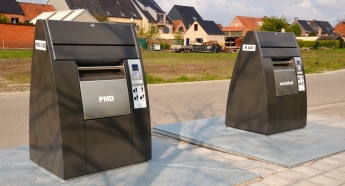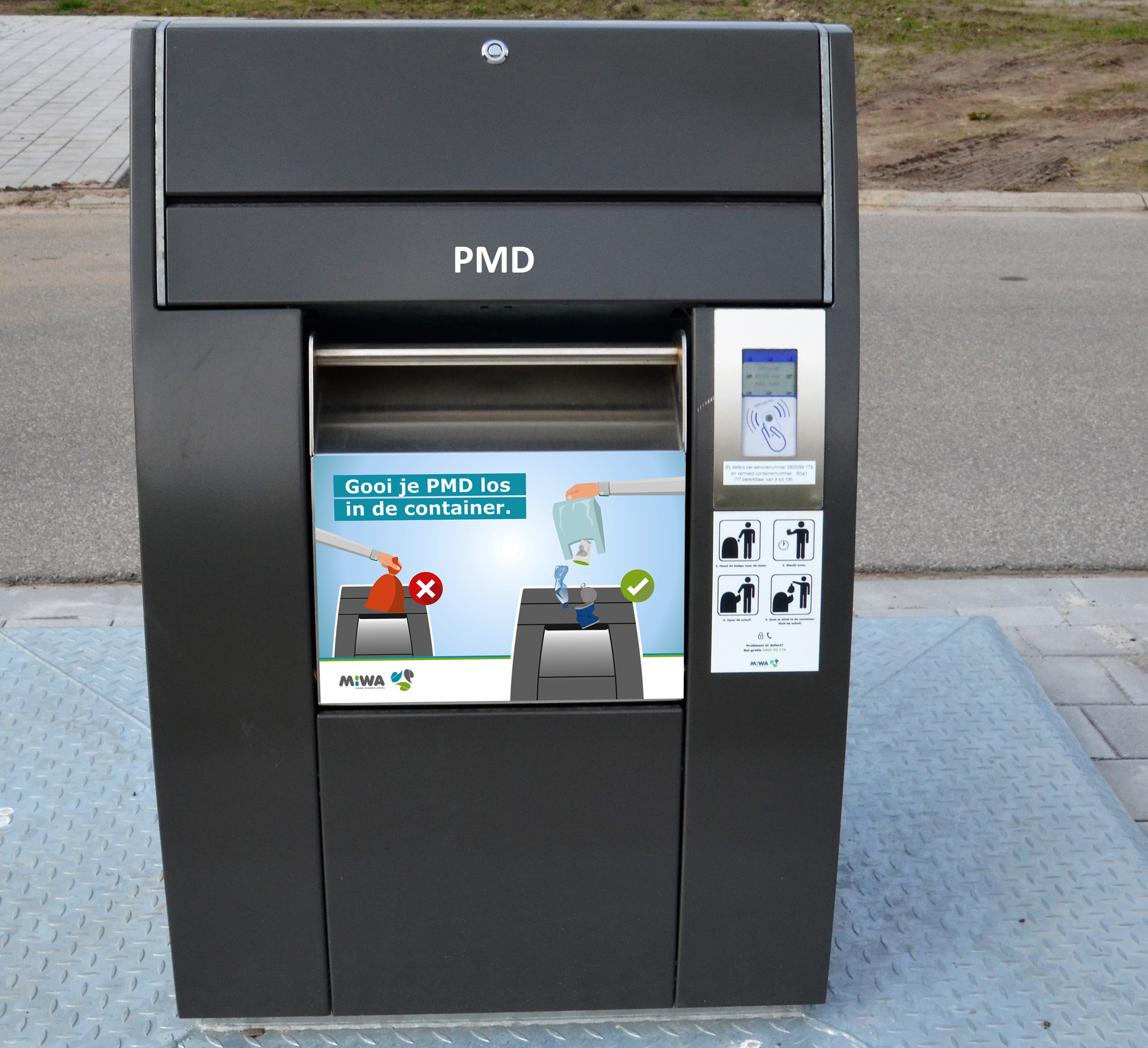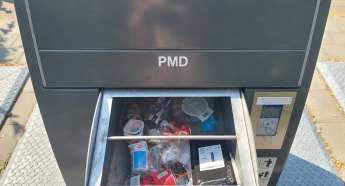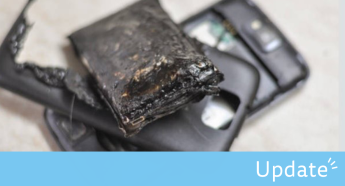How MIWA improved the quality of its underground PMD collection

The underground collection of PMD regularly leads to quality problems. So too at the intermunicipal association MIWA from the Waasland region. "After consultation and in cooperation with Fost Plus, we decided to modify the insertion openings of the PMD containers. As a result, the residue percentage, which was over 30% at the beginning of last year, fell to 8.1%, a figure in line with our door-to-door collection," says Klara Van der Gucht, Communication and Policy Officer at MIWA.
Collection of residual waste, PMD and paper-cardboard via underground containers is increasingly common. "Among other things, they are a good solution for high-rise buildings," explains Klara Van der Gucht. "For a flat block with hundreds of residents, it is not obvious to organise a classic collection round. But even in new housing projects, where there is a lot of emphasis on a green environment, collection via underground containers and drop-off lanes is chosen because the collection trucks usually do not reach the houses."
"In itself, most residents don't mind so much that they have to walk a bit to the drop-off point. Being able to dispose of their waste at a time that suits them best often compensates for the extra effort. The badge system also allows them to keep track of their waste costs meticulously."

Lack of social control
A major drawback for the intercommunal is that the quality of PMD collected is a lot lower. "We see a lot of material in the containers that do not belong in PMD, such as polystyrene foam, gas cylinders or packaging of Small Hazardous Waste. There is less social control than with door-to-door collection where refused PMD bags are left in front of people's doors. People do have to badge to access the container but once the waste is in it, you can't check who it came from."
"By the way, it's not always about deliberate sorting errors," stresses Klara Van der Gucht. "People often copy the behaviour of their neighbours. You sometimes literally see the same sorting errors occur in a certain neighbourhood or flat block. It's a phenomenon we also see in door-to-door collection."
We installed a horizontal bar in the middle of the charging bins where people hand in their PMD. With this, we prevented people from still being able to throw large bags into the container.
The bags offered in this way are not always of poor quality. "In analyses, we see that a significant proportion of them contain relatively well-sorted PMD. Unfortunately, we cannot visually check the opaque bags and therefore cannot distinguish between them," says Klara Van der Gucht.
In recent years, a number of loads from MIWA's underground containers were refused by the sorting centre. "That is of course annoying for us as an intermunicipal company, because it involves extra costs. But it is also a bad thing from an environmental point of view. After all, the rejected loads go to the incinerator, which means perfectly recyclable material is lost."
Modified insert openings
"We therefore decided to tackle the problem in depth, even though today it still concerns a relatively small part of the population in our area of operation - a good 2,000 households use underground containers out of a total of 67,200," says Klara Van der Gucht. "In a first phase, we worked mainly on communication and awareness-raising, usually in close cooperation with the syndic/property manager or housing company. We sent letters to residents, along with posters and visual sorting instructions for each fraction. We also adapted the stickers on the containers."
PMD in opaque bags
But the biggest problem of all is that a lot of residents collect their PMD waste at home in small bags or larger, often opaque bags that they then throw in the containers. "At the sorting centres, however, they can't do anything with these closed bags, so the contents are largely lost. They are not automatically torn open by the sorting facility - as is the case with the regulation blue PMD bags - resulting in technical problems and blockages. But it is not always easy for residents to understand why PMD is collected door-to-door in bags and cannot be collected at the underground containers."

Yet these efforts did not give the hoped-for results. The intermunicipal company therefore teamed up with Fost Plus to find a further solution. “We installed a horizontal bar in the middle of the charging bins where people hand in their PMD. With this, we prevented people from still being able to throw large bags into the container."
During an initial pilot project, the intermunicipal company tested three different rods: a horizontal, vertical and a cross-shaped one. The vertical arrangement proved inefficient - as smaller bags could still get between them - while the cross-shaped arrangement was impractical for residents. When people shook out the bags, the packaging flew around, which cannot be the intention either."

Excellent results
After an initial successful pilot project at three locations, MIWA fitted all underground containers with the modified insert openings earlier this year. "From the quality analyses in early June - some four months after the bars were installed - we see a significant improvement in our quality," says Klara Van der Gucht. "No more opaque bags were found, and the residue percentage - which was over 30% in May last year - dropped to 8.1%, a figure in line with door-to-door collection in our catchment area. The best proof that you can achieve very nice results with a relatively simple intervention."



